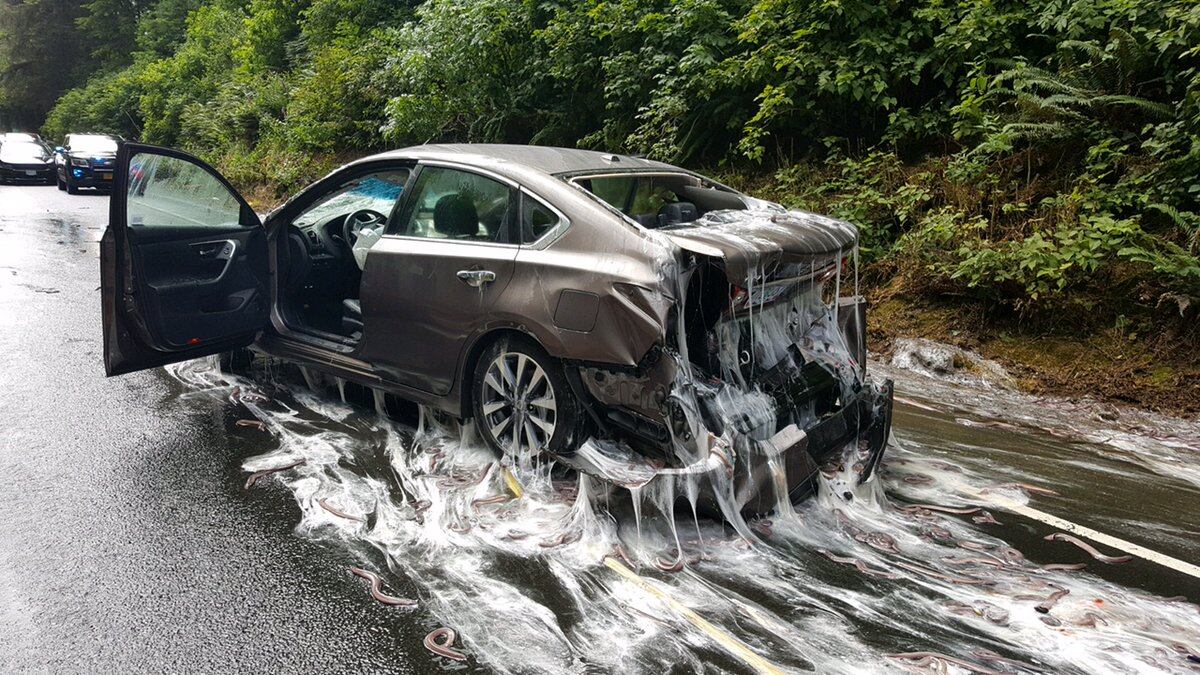A stream of eels and slime poured out of an overturned truck on U.S. Highway 101 along the central Oregon coast this afternoon, covering nearby cars in thick white goo and squirming fish.
Officials in Lincoln County had to employ bulldozers to clear the sea of brown eels from the road. They pushed piles of dead and live eels off the road, scooping the white slime away at the same time.
The eels were en route to Korea, where they would have been eaten.
Several cars caught in a pile up that ended up drenched by the fishy sludge had to be abandoned by their drivers. Eels clung to dislodged bumpers and the white slime dripped down rear windows.

The Oregon State Police and the Depoe Bay Fire District took to Twitter to share photos of the sticky mess. The disturbing scene inspired officials to wonder whether a fishy smell would linger after the eels were scooped up and thrown away.
Officials said although a few cars were damaged in the accident, no one was hurt. Except for the eels.
Update, 4:20 p.m.: The Depoe Bay Fire District tweeted that the fish spilled all over Highway 101 were hagfish, an eel-like Oregon coast native that produces massive amounts of white slime when agitated.
Koreans prize the fish and its slime for some dishes, using the goo like egg whites. You can even find recipes for hagfish-slime scones online. The slime is made of sugars and proteins, and the hagfish use it to trap would-be predators and their own prey.
Hagfish are pretty useful animals. The hagfish's skin is also used to make leather products, like purses and wallets, which are often advertised as "eel-skin." Some scientists hope that the animal's slime, with its unique physical properties, could be used in biomedical research or to make super-strong materials similar to Kevlar.
